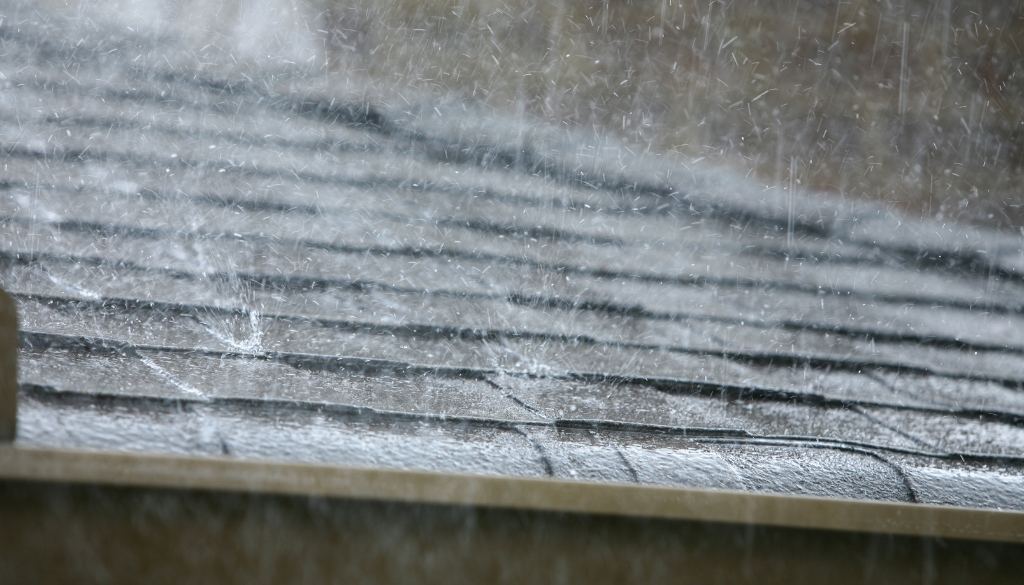
Apr 15, 2024 | Maintenance, Prevention, Residential, Roofs
As storm season approaches La Crosse, Wisconsin and surrounding areas, homeowners brace themselves for the powerful forces of nature. Roof and property protection is not just about securing your investment; it’s about ensuring the safety and comfort of your loved ones. At Ledegar Roofing, we understand the significance of a well-prepared home, and we’re here to guide you through the essential steps to weather any storm.
Understanding the Risk
Wisconsin storms can bring a variety of challenges, from high winds and heavy rainfall to hail and even the occasional tornado. These conditions can put immense pressure on your home’s exterior, especially the roof, which serves as your first line of defense.
Roof Protection: Your First Line of Defense
Regular Inspections
The journey to a stormproof home begins with regular roof inspections. Ideally, inspect your roof bi-annually, in spring and fall, to identify and address potential vulnerabilities. Look for missing, damaged, or worn shingles, which can become gateways for water during a storm. Ensure that your roof’s flashing – the metal strips that seal edges and valleys – is intact and free from rust or damage.
Gutter Maintenance
Your gutter system plays a crucial role in managing stormwater and protecting your roof and foundation. Clean your gutters and downspouts regularly to prevent blockages that can lead to water overflow, causing roof and siding damage.
Trim Overhanging Branches
Trees add beauty and value to your property, but in a storm, overhanging branches can become hazardous. Trim branches that hang over your roof to prevent them from breaking off and causing damage during high winds.
Fortifying Your Home’s Exterior
Siding and Windows
Inspect your siding for any cracks, loose panels, or signs of wear. Repair or replace damaged sections to enhance your home’s ability to withstand storm conditions. For windows, consider installing storm shutters or impact-resistant glass to protect against high winds and flying debris.
When the Storm is Imminent
Stay Informed
Keep track of weather updates through reliable sources. Knowing when a storm is expected to hit, and its potential severity can help you make timely decisions to protect your home and family.
Last-Minute Checks
As the storm approaches, perform a final check of your property. Ensure that gutters are clear, windows are shut and secured, and any loose items are safely stored.
Post-Storm Assessment and Recovery
Assess and Document Damage
Once it’s safe, assess your property for damage. Take photos of any damage for your records and insurance claims. Pay particular attention to your roof, siding, windows, and foundation.
Professional Inspections
For a thorough assessment, especially of your roof, consider hiring a professional. Specialists from Ledegar Roofing can identify issues that may not be obvious to the untrained eye, ensuring that your home remains secure and well-protected.
Timely Repairs
Promptly address any damage identified. Delaying repairs can lead to more significant issues, including leaks, mold, and structural damage.
Conclusion
Protecting your roof and property during storm season is about proactive preparation and prompt response. At Ledegar Roofing, we’re committed to helping you navigate any storm damage that may occur this season. If you’re in Onalaska, Wisconsin or surrounding areas, and looking for professional advice, inspections, or repairs, don’t hesitate to reach out. Contact us today.
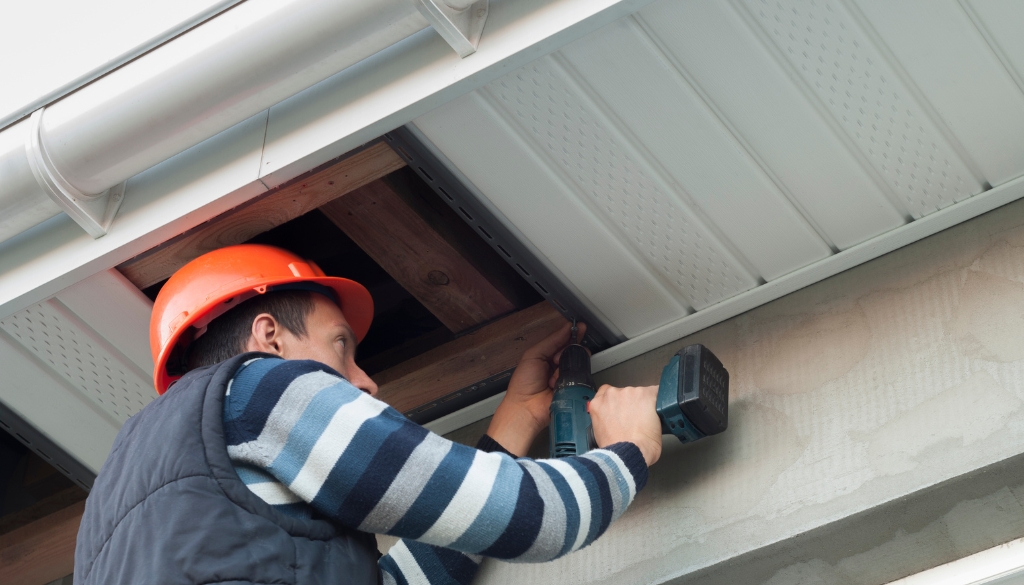
Mar 25, 2024 | Prevention, Roofs, Siding
When it comes to roofing, homeowners often focus on the shingles, tiles, or overall structural integrity. However, nestled within the architectural intricacies of a well-built roof lie the unsung heroes: soffit and fascia. These vital components play crucial roles in protecting your home from various elements and enhancing its overall functionality and appearance. In this blog, we will delve into the benefits of soffit and fascia, including moisture prevention, enhanced ventilation, curb appeal, and structural longevity, brought to you by the experts at Ledegar Roofing in La Crosse, Wisconsin.
The Role Of Soffit And Fascia
Before we dive into the benefits, let’s clarify what soffit and fascia are:
- The fascia is the visible, vertical finishing edge that runs along the roofline, attaching to the roof trusses and supporting the bottom row of tiles and all the guttering.
- The soffit, on the other hand, is tucked away underneath the fascia board. It’s the exposed surface beneath the overhanging section of a roof eave and is visible from street level.
Moisture Prevention
One of the primary functions of soffit and fascia is to protect the roof and interior of your home from moisture. The fascia acts as a barrier between the edge of the roof and the elements, preventing rainwater from seeping into the roof structure. Properly installed fascia boards are essential for directing water into the gutters, ensuring it flows away from your property, thus mitigating the risks of water damage.
The soffit plays a supporting role in moisture prevention by providing necessary ventilation to the attic space. Adequate airflow prevents the buildup of condensation, which can lead to mold growth, wood rot, and a host of moisture-related issues within your roof and attic spaces.
Enhanced Ventilation
Soffits are integral to maintaining a consistent airflow between your roof and attic. They commonly feature small holes or perforations that allow air to circulate freely, which is crucial for regulating temperature and moisture levels in the attic. This ventilation helps in dissipating heat during the warmer months and reduces moisture accumulation during colder periods, thereby protecting the roof structure from the adverse effects of trapped heat and condensation.
Curb Appeal
While they may be functional at their core, soffit and fascia also significantly contribute to the aesthetic appeal of your home. Available in a variety of materials, colors, and finishes, these elements can be customized to complement your home’s architectural style and enhance its overall curb appeal. Whether you prefer the classic elegance of wood, the durability of vinyl, or the sleek finish of aluminum, the right soffit and fascia can provide the perfect finishing touches to your home’s exterior.
Structural Longevity
By safeguarding against moisture damage, ensuring proper ventilation, and contributing to the overall aesthetic appeal, soffit and fascia indirectly support the structural longevity of your home. They help in maintaining the integrity of the roof and attic, prevent the deterioration of roofing materials, and protect the rafters from environmental elements. This protection extends the life of your roof and, by extension, your home, ensuring that it remains strong and durable for years to come.
The Ledegar Roofing Advantage
At Ledegar Roofing, we understand the critical roles that soffit and fascia play in the overall health and appearance of your home. Our team of experts is equipped with the knowledge and experience to provide top-quality soffit and fascia installation, repair, and maintenance services. We work closely with our clients to assess their needs, provide customized solutions, and ensure that every aspect of their roofing system functions harmoniously.
If you’re in La Crosse, Wisconsin or surrounding area, and looking to enhance, repair, or learn more about the soffit and fascia on your home, Ledegar Roofing is here to help. Contact us today to schedule a consultation, and let us assist you in ensuring your home remains beautiful, functional, and protected for years to come.
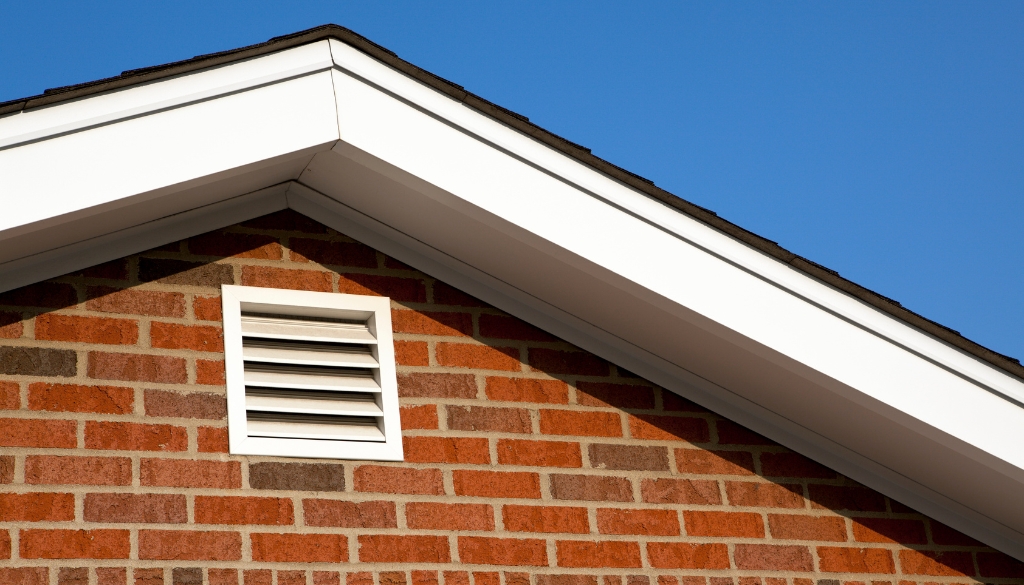
Mar 18, 2024 | Education, Maintenance, Prevention, Residential, Safety
As the Coulee Region says goodbye to winter and welcomes the spring weather, homeowners are reminded of all the preparations that accompany the seasonal transition. Among these, ensuring proper attic ventilation should be at the top of the list. In this blog, our experts at Ledegar Roofing will get into its critical role in maintaining the integrity of your home, enhancing its energy efficiency, and protecting your comfort through the warmer months.
The Role Of Attic Ventilation
It might seem like a minor aspect of home maintenance, but its impact is substantial. It involves the exchange of air in the attic space, allowing the hot air out and cooler air to enter. This simple process is pivotal for several reasons:
As temperatures rise, so does the heat captured in your attic. Without adequate ventilation, this heat can become trapped, causing temperatures in your attic to soar. This not only affects the comfort levels within your home but can also lead to the overheating of roofing materials, potentially shortening their lifespan and compromising the overall integrity of your roof.
Spring doesn’t just bring warmth; it also brings humidity. Proper attic ventilation ensures that moist air doesn’t get trapped within your attic. Moisture accumulation can lead to mold growth and wood rot, both of which can weaken your home’s structure and degrade air quality.
A well-ventilated attic contributes significantly to your home’s energy efficiency. By preventing heat accumulation, your cooling system doesn’t have to work as hard to maintain comfortable indoor temperatures, leading to lower energy consumption and, consequently, reduced utility bills.
While spring is here, Wisconsin residents know all too well that winter can linger. Proper attic ventilation plays a crucial role in preventing ice dams, which occur when heat from the attic melts snow on the roof, only to refreeze at the eaves. This can lead to water damage both externally and internally.
Ensuring Optimal Attic Ventilation
Achieving and maintaining optimal attic ventilation involves several components:
Effective ventilation relies on a balance between air intake (usually through soffit vents) and air exhaust (through ridge vents or other roof vents). This balance ensures a continuous flow of air that keeps the attic temperature in check.
Routine inspections, particularly during seasonal transitions, can help identify any blockages, damages, or inefficiencies in your attic ventilation system. Ensuring vents are clear of debris and in good working order is essential.
Given the complexities involved in achieving proper ventilation, consulting with roofing professionals like Ledegar Roofing can provide invaluable insights. A professional assessment can determine the adequacy of your current ventilation system and recommend enhancements tailored to your home’s specific needs.
Depending on the assessment, upgrading your attic ventilation might involve adding more vents, improving the insulation, or repairing existing ventilation fixtures. These enhancements can significantly improve the efficacy of your attic’s ventilation system.
The Ledegar Roofing Advantage
At Ledegar Roofing, we recognize the pivotal role of attic ventilation in protecting your home against the challenges of rising temperatures. Our team is adept at evaluating, installing, and maintaining attic ventilation systems, ensuring they are optimized for your home’s unique requirements.
With Ledegar Roofing, you can be rest assured that your attic ventilation is conducive to the longevity of your roof, the efficiency of your home, and the comfort of your living spaces. Contact Us to get started today.
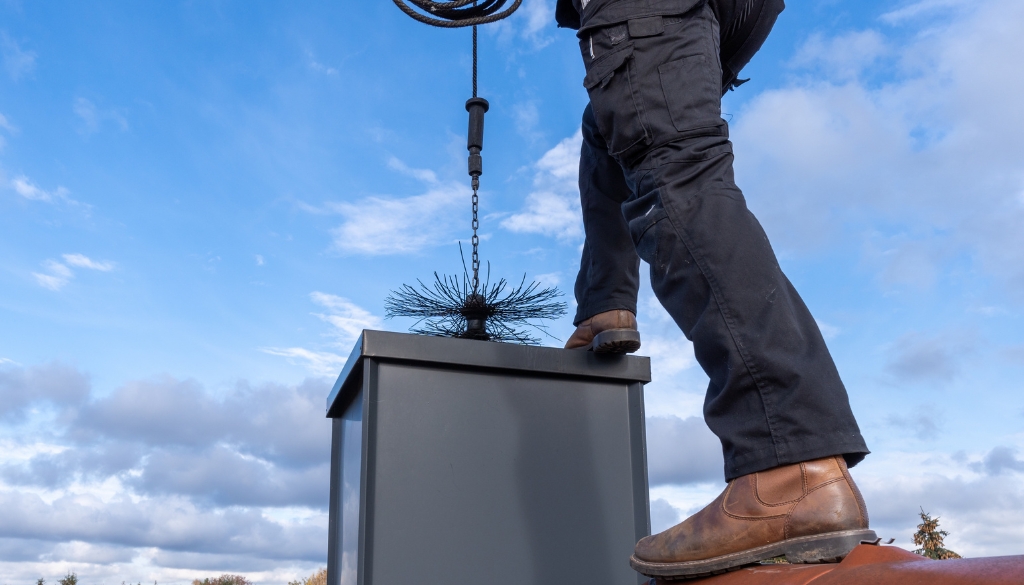
Mar 6, 2024 | Chimney, Maintenance, Prevention, Safety
Spring is in the air, and with it comes the urge to refresh and renew everything around us. While you’re caught up in the spring-cleaning frenzy, there’s one task that should definitely make it to your checklist: a professional chimney sweep. Let our experts at Ledegar Roofing explain why spring is the golden season for giving your chimney some much-needed TLC.
Post-Winter Recovery
From crackling fires keeping your home cozy to battling snow, sleet, and freezing temperatures, your chimney works overtime in the winter. All of this activity can lead to the buildup of soot, creosote, and other debris in your flue. Creosote, in particular, is not just dirty—it’s a major fire hazard if left unchecked. A spring chimney sweep clears out all that gunk, ensuring your chimney is safe and ready for its well-deserved off-season.
Beat The Fall Chimney Sweep Rush
As the leaves start to turn and the air gets crisp, chimney sweep services get bombarded with calls, making it tougher to book an appointment that fits your schedule. Opting for a spring cleaning means you’ll avoid the autumnal rush. Plus, taking care of it in spring means one less thing to worry about when you’re busy prepping for the holiday season later in the year.
The Smell Factor
Ever notice an odd smell emanating from your fireplace during the warmer months? That’s likely due to the creosote and soot buildup in your chimney, which can start to stink when the humidity rises. Getting your chimney swept in spring tackles this issue head-on, ensuring your home stays fresh and odor-free as temperatures climb.
Time For Repairs
A thorough chimney sweep isn’t just about cleaning; it’s also an opportunity for a professional to inspect your chimney for any damage or wear. Winter can be tough on your chimney, with the potential for water damage, cracks, and other structural issues. Identifying these problems in spring gives you ample time to get them repaired before the next cold spell hits. This proactive approach can save you from more significant, costly repairs down the line and keep your chimney functioning safely and efficiently.
Nesting Season Awareness
Spring is when many animals are on the lookout for cozy nesting spots, and an unclean chimney can be an inviting option for birds, raccoons, and other critters. A spring chimney sweep ensures your flue is free of nests and equipped with the proper caps or screens to prevent animals from making your chimney their home. This not only protects wildlife but also ensures your chimney’s airflow remains unobstructed.
Prolonging Your Chimney’s Lifespan
Regular maintenance, including annual chimney sweeps, plays a crucial role in extending the lifespan of your chimney. By removing corrosive substances and ensuring the structure is in good shape, you’re effectively investing in the longevity of your chimney. This routine care can prevent premature deterioration, helping you avoid the need for a complete chimney rebuild—a situation that’s both inconvenient and costly.
Peace Of Mind
Perhaps the most significant benefit of a spring chimney sweep is the peace of mind it brings. Knowing your chimney is clean, safe, and in good working order allows you to enjoy the warmer months without worry. And when the first cold snap of the next winter arrives, you can light that first fire with confidence, knowing your chimney is ready to go.
The Ledegar Roofing Advantage
At Ledegar Roofing, we understand the importance of chimney maintenance and the peace of mind it brings to homeowners in and around La Crosse County. Our team of experts is equipped to provide thorough chimney sweeps, inspections, and any necessary repairs. We’re committed to ensuring your chimney is safe, clean, and ready to serve you for many seasons to come.
Spring is the perfect time to give your chimney the care it deserves. If you’re ready to schedule your spring chimney sweep or have any questions about chimney maintenance, contact us. Let’s make sure your chimney is a source of warmth and comfort, not worry.
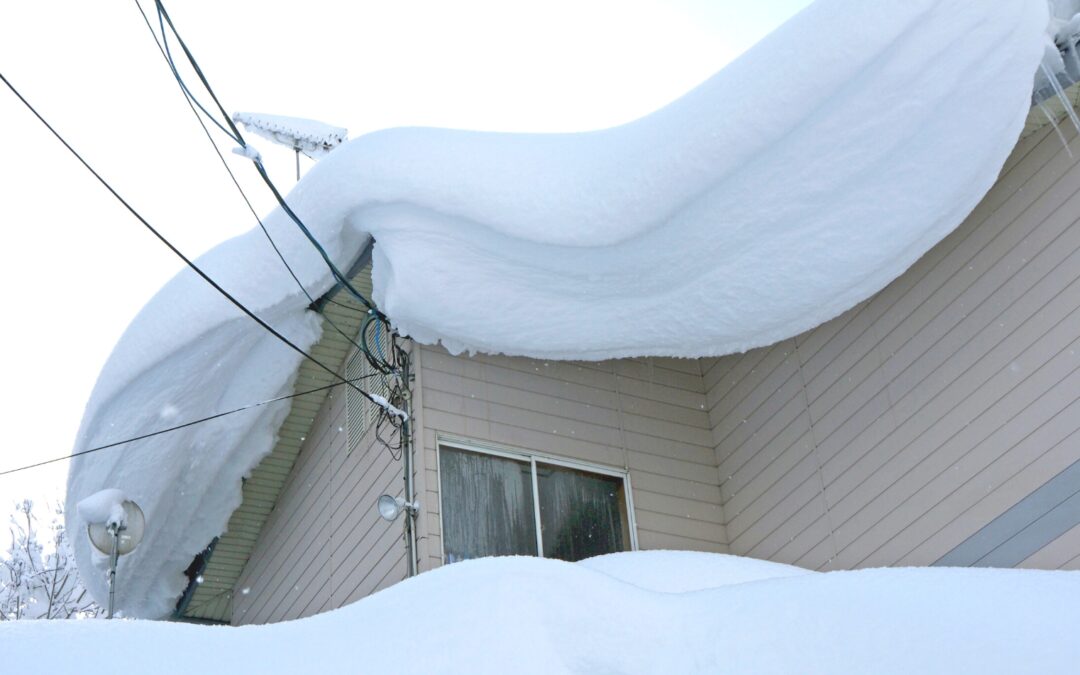
Jan 24, 2024 | Education, Prevention
As the winter season drapes La Crosse, Wisconsin, in its snowy mantle, the picturesque landscapes can often hide potential dangers, particularly when it comes to snow accumulation on your roof. At Ledegar Roofing, we understand the beauty of a winter wonderland, but also the importance of being aware of the risks heavy snowfall brings to your roof. In this comprehensive guide, we will explore the hidden dangers of snow accumulation on your roof and provide essential tips to safeguard your home.
Understanding Snow’s Impact on Your Roof
Roofs are designed to withstand a variety of weather conditions, but excessive snow accumulation can pose significant risks. The weight of snow, especially when it becomes compacted or turns into ice, can exert substantial pressure on your roof’s structure. This can lead to various problems, some of which are not immediately apparent.
The Weight Issue
A key concern with snow accumulation is the weight. Fresh, fluffy snow might seem light, but it can quickly become dense when packed. A foot of fresh snow can weigh approximately five pounds per square foot, while a foot of packed snow can weigh more than 20 pounds per square foot. For reference, ice is even heavier. Your roof’s ability to handle this weight depends on several factors, including its age, design, and the condition of the supporting structure.
Potential Structural Damage
Excessive weight from snow can cause the roof to sag, leading to structural damage such as cracked or broken rafters and trusses. In severe cases, it could even lead to a roof collapse, posing a significant safety hazard and potentially causing extensive damage to your home.
Ice Dams: A Hidden Menace
Another concern during the Wisconsin winters is the formation of ice dams. These occur when the heat from your home causes the snow on the roof to melt. The water then refreezes at the roof’s edge, forming a dam that prevents proper drainage. This can lead to water seeping under the shingles and into your home, causing damage to walls, ceilings, and insulation.
Vulnerability to Leaks
Snow and ice on the roof can also exacerbate existing vulnerabilities, such as cracks or gaps, leading to leaks. As the snow melts, water can seep into these openings, causing internal damage that may not be immediately noticeable.
Identifying Risks and Taking Action
Regular Roof Inspection
The first step in preventing damage due to snow accumulation is a thorough roof inspection, ideally before the onset of winter, but during winter works too. This inspection can identify potential vulnerabilities that snow and ice could exploit.
Calculating Snow Load
Understanding the snow load your roof can handle is vital. This depends on several factors, including the roof type, slope, and the materials used. In the La Crosse area, considering the typical snowfall, it’s essential to know when the weight is becoming a risk.
Efficient Snow Removal
Removing snow from the roof can prevent excessive weight accumulation and reduce the risk of ice dams. However, this task can be risky and should ideally be done by professionals. At Ledegar Roofing, we offer safe and efficient snow removal services.
Preventing Ice Dams
To prevent ice dams, ensure that your attic is well insulated and ventilated. This keeps the roof temperature consistent, reducing the chances of snow melting and refreezing at the eaves.
Monitoring and Maintenance
Regularly monitor your roof during winter, especially after heavy snowfall or a freeze-thaw cycle. Promptly address any issues, such as leaks or ice dam formation.
Professional Assistance: The Ledegar Roofing Advantage
Dealing with snow accumulation on your roof is not a task to be taken lightly. Professional assistance is crucial for several reasons:
- Safety: Removing snow from roofs can be dangerous. Our team at Ledegar Roofing has the necessary equipment and expertise to perform this task safely.
- Expertise: We can accurately assess the snow load and identify potential risks, providing peace of mind.
- Efficiency: Our experienced professionals can quickly and effectively remove snow, reducing the risk of damage.
- Preventative Measures: We can offer advice and services to prevent future issues, such as improving insulation or installing snow guards.
While snow-covered roofs are a hallmark of Wisconsin winters, being aware of the dangers they pose is crucial. Homeowners in the Coulee Region should proactively address these risks to protect their homes. Regular inspections, understanding the snow load capacity, efficient snow removal, and professional assistance are key to safeguarding your roof against the harsh winter conditions.
For expert roofing services, snow removal, and winter roof maintenance, trust Ledegar Roofing. We are committed to ensuring the safety and integrity of your roof, no matter what the winter brings. Contact us at 608-785-0901 or request an inspection online and let us help you keep your home safe and secure this winter.
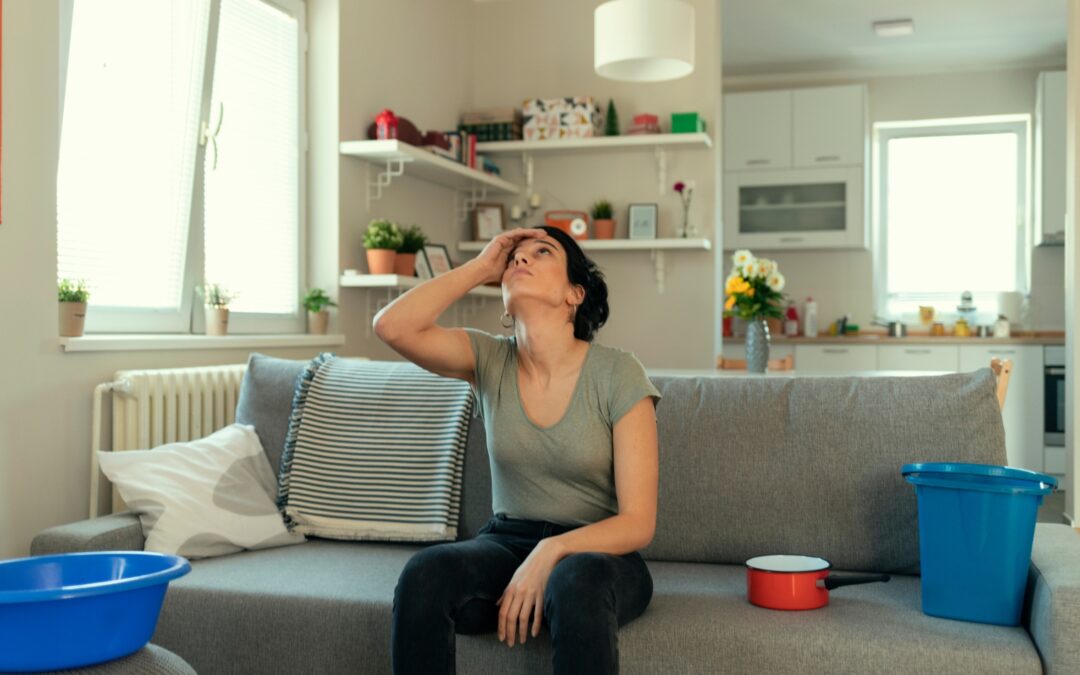
Jan 14, 2024 | Inspection, Prevention, Residential, Roofs
In the charming city of La Crosse, Wisconsin, and the surrounding areas, homeowners often face the perplexing dilemma of distinguishing between roof leaks and condensation problems. While it’s easy to assume that any water damage or dripping from the ceiling is due to a leaky roof, often the real issue lies within – excessive humidity leading to condensation. At Ledegar Roofing, we frequently encounter this confusion among our customers. This comprehensive guide will help you understand the difference between leaks and condensation issues, enabling you to take the right steps toward a solution.
Understanding the Basics: Roof Leaks vs. Roof Condensation
Roof Leaks
A roof leak is usually caused by external factors such as damaged shingles, cracks, or gaps in the roof structure, allowing water to seep in from the outside. These leaks are often identifiable during or after rainfall and can lead to significant water damage if not addressed promptly.
Condensation
Condensation occurs when excess moisture in the air inside your home comes into contact with a cold surface, such as your attic or roof during the winter months. This moisture turns into water droplets that can drip, causing damage that mimics that of a leak.
Identifying Condensation Issues
Condensation issues are commonly mistaken for roof leaks. Here are signs that your problem might be due to condensation rather than a leak:
Time and Weather Correlation
If the water damage appears or worsens during cold weather, especially without rain or snow, it’s more likely to be condensation.
Location of Water Damage
Condensation typically forms in areas where warm, moist air is present, like the attic. Check for dampness or water staining in these areas.
Appearance of Mold and Mildew
Excessive moisture from condensation can lead to mold and mildew growth, which often has a musty smell.
Water Stains on Ceilings and Walls
Unlike the more direct and localized impact of a leak, condensation often causes more generalized water staining.
Causes of Excessive Indoor Humidity
Understanding what contributes to high levels of humidity in your home is crucial. Common factors include:
Poor Ventilation
Lack of adequate ventilation, especially in areas like the attic, can trap moist air.
Daily Activities
Cooking, showering, and drying clothes indoors without proper ventilation can significantly increase indoor humidity.
Inadequate Insulation
Poor insulation can cause warm air to reach colder surfaces, where it condenses.
Heating Systems
Certain types of heating can increase indoor humidity levels.
Dealing with Condensation
Once you’ve identified condensation as the culprit, here’s how you can address it:
Improve Ventilation
Ensure areas like your attic and bathrooms are well-ventilated. Installing attic vents, exhaust fans in bathrooms and kitchens, and ensuring that air can circulate freely throughout your home can help reduce moisture levels.
Use Dehumidifiers
In areas with persistently high humidity, consider using a dehumidifier to maintain optimal moisture levels.
Check and Upgrade Insulation
Inspect and upgrade insulation, particularly in your attic, to prevent warm air from reaching cold surfaces.
Regular Maintenance Checks
Have professionals like Ledegar Roofing conduct regular inspections to identify and rectify potential issues that might contribute to condensation.
Professional Assessment and Repairs
Determining whether you’re dealing with a leak or condensation can be tricky. Professional assessment is key to identifying the exact cause of the problem. At Ledegar Roofing, we provide thorough inspections to determine the root cause of the water damage. Our team will inspect your roof, attic, insulation, and ventilation systems to diagnose the issue accurately.
Why Choose Ledegar Roofing?
At Ledegar Roofing, we combine our roofing expertise with an understanding of home ventilation and insulation to provide comprehensive solutions to our customers. We recognize the unique challenges posed by the Coulee Region’s climate and are equipped to offer tailored strategies to combat condensation and humidity-related issues in your home.
Distinguishing between a roof leak and condensation is vital in ensuring the right approach to protecting your home. Understanding the signs and causes of condensation, and taking proactive steps to mitigate it, can save you from unnecessary repairs and maintain the integrity of your home.
For expert guidance and solutions in La Crosse, Wisconsin, turn to Ledegar Roofing. Contact us at 608-785-0901 or request an inspection today. Our team is ready to help you resolve your roofing woes, whether it’s a leak, condensation, or any other issue. Trust us to keep your home dry, safe, and comfortable, no matter the season.










